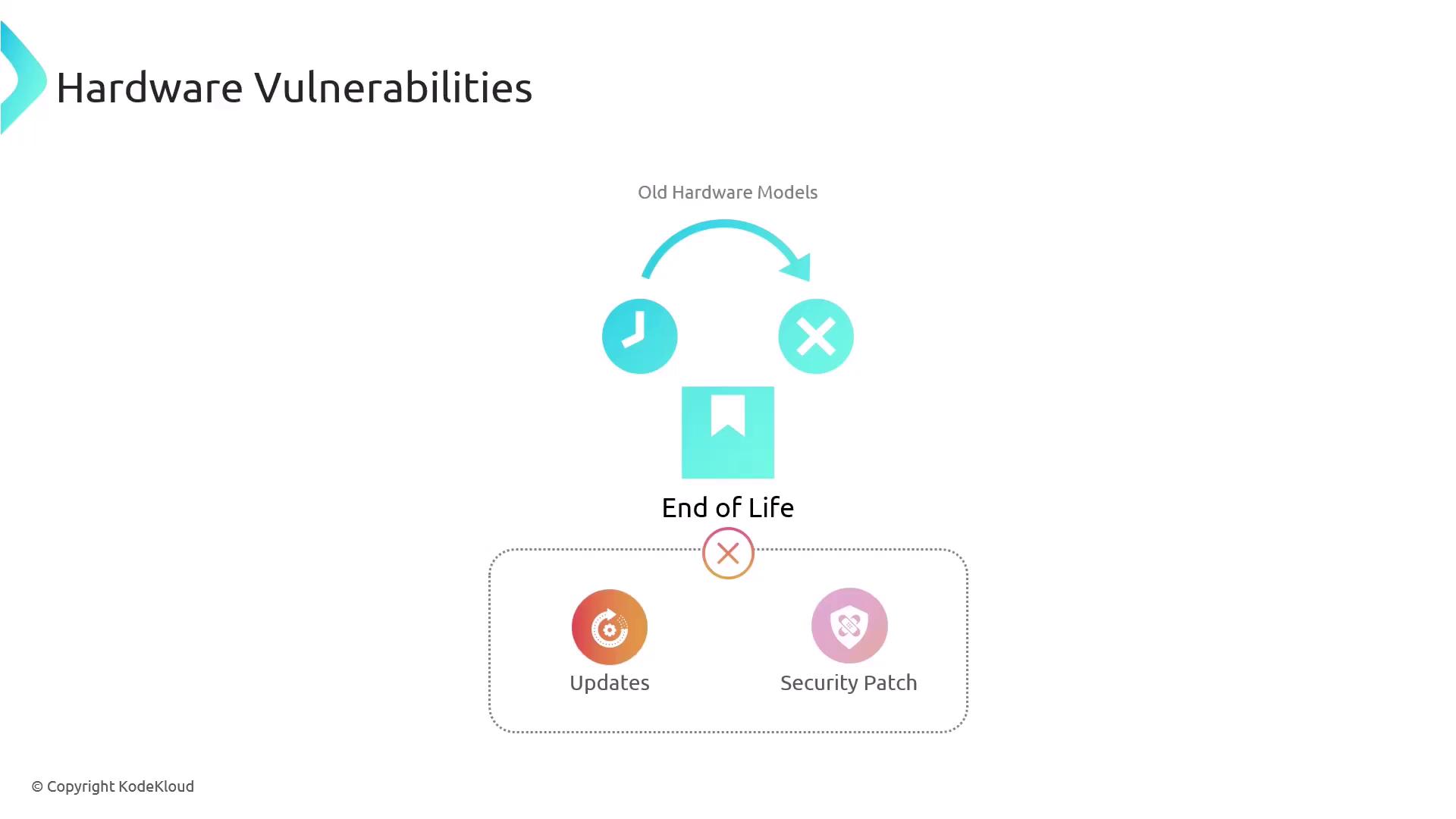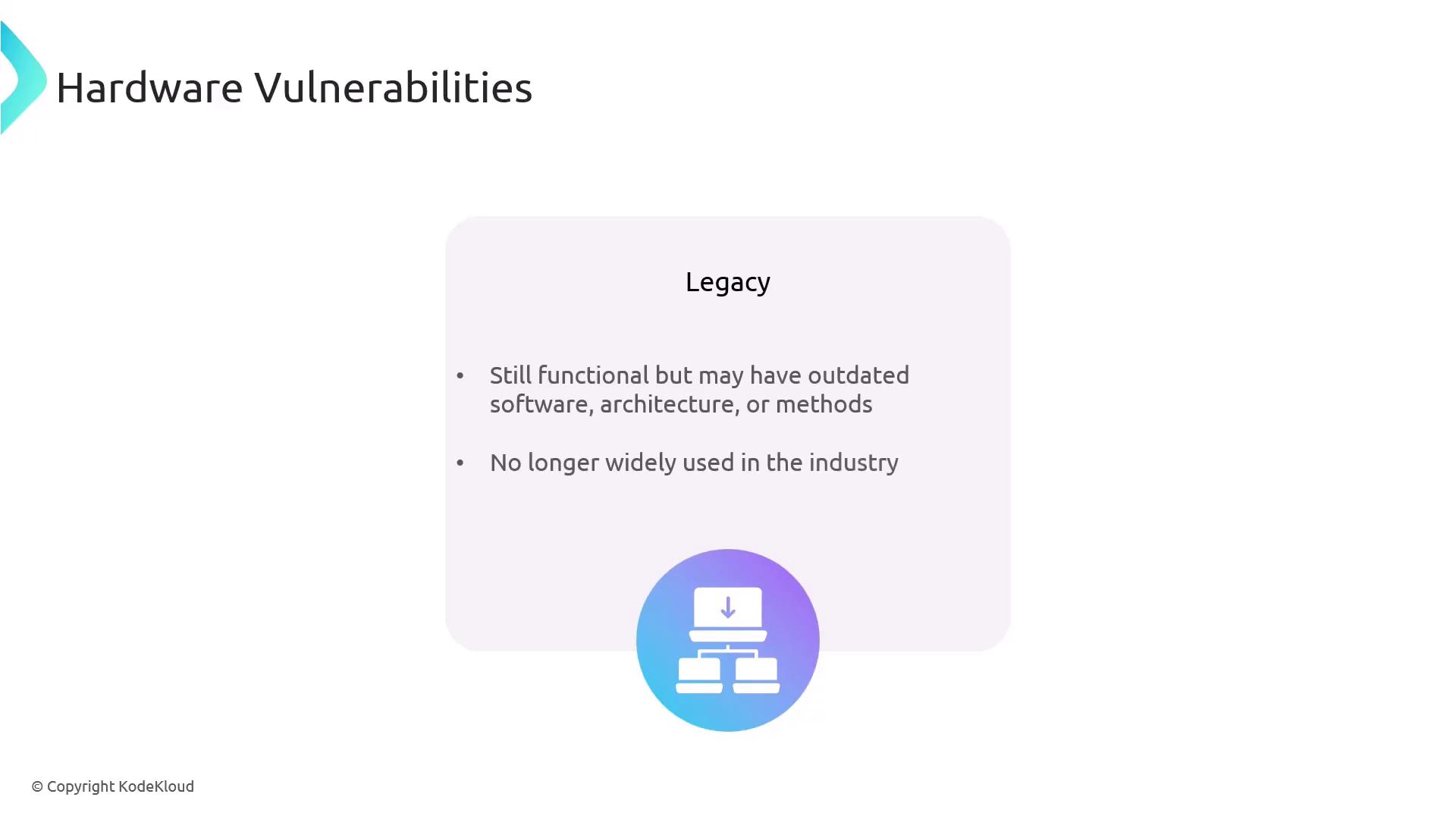CompTIA Security+ Certification
Threats Vulnerabilities and Mitigations
Hardware Vulnerabilities
Understanding hardware vulnerabilities is essential for maintaining a secure technology infrastructure. In addition to software vulnerabilities, the physical components of systems can also be exposed to risks. The two most common hardware vulnerabilities arise from devices reaching end-of-life (EOL) and from utilizing legacy systems.
Note
Best practice is to proactively replace hardware devices before they reach their end-of-life stage to ensure continuous security updates and support.
End-of-Life (EOL) Hardware
Modern technology evolves rapidly, prompting manufacturers to introduce new hardware models while phasing out older ones. Once a vendor discontinues support for a product, that hardware is considered end-of-life. This status means that no further updates, including critical security patches, will be released, leaving the device vulnerable to attacks.

Legacy Systems
Legacy systems refer to operational hardware that relies on outdated software, architectures, or methodologies no longer prevalent in today’s industry. Although these systems may still be functional, they often lack the necessary security updates to mitigate emerging threats.

Firmware Vulnerabilities
Firmware is a specialized type of software embedded directly into hardware components. Unlike typical software that runs on top of an operating system, firmware functions at a very low level and is closely integrated with the hardware. This makes firmware a particularly attractive target for threat actors.
Warning
Exploiting firmware vulnerabilities can be challenging to diagnose and remediate compared to traditional software issues. Regular BIOS or firmware updates are essential to mitigate these risks.

Summary
To effectively safeguard against hardware vulnerabilities, it is crucial to:
- Replace devices before they reach their end-of-life to ensure they remain protected with the latest updates.
- Recognize the risks associated with legacy systems that may not receive ongoing security patches.
- Maintain diligent firmware update policies to address potential vulnerabilities embedded within hardware.
Staying ahead of these vulnerabilities is vital in an ever-changing technology landscape. For more information on security best practices, consider exploring resources like Kubernetes Documentation and Docker Hub.
Watch Video
Watch video content